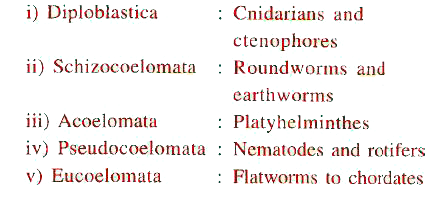Which of the following is correct ?
According to VSEPR theory SNCI2 in a linear molecule
The number of electrons present in the valence shell in SF6 is 12
The rates of ionic reactions are very slow
The correct order of ability form ionic compounds among Na⊕,Mg2+, and A1+3 is A1+3>Mg+2>Na⊕ .
The correct Answer is:B
To solve the question "Which of the following is correct?" we need to analyze each statement provided. Let's break it down step by step.
Step 1: Analyze the first statement about SnCl2
- Statement: According to VSEPR theory, SnCl2 is a linear molecule.
- Calculation:
- Count the valence electrons:
- Sn (Tin) has 4 valence electrons.
- Cl (Chlorine) has 7 valence electrons, and there are 2 Cl atoms: 2 × 7 = 14.
- Total = 4 (from Sn) + 14 (from Cl) = 18 valence electrons.
- Divide by 8 to find the bonding pairs and lone pairs:
- 18 ÷ 8 = 2 with a remainder of 2.
- This means there are 2 bond pairs and 1 lone pair.
- Shape: With 2 bond pairs and 1 lone pair, the shape is V-shaped (or bent), not linear.
- Conclusion: The first statement is wrong.
Step 2: Analyze the second statement about SF6
- Statement: The number of electrons present in the valence shell of SF6 is 12.
- Calculation:
- Sulfur (S) has 6 valence electrons.
- In SF6, sulfur forms 6 bonds with fluorine, contributing 6 more electrons (2 electrons per bond).
- Total = 6 (from S) + 6 (from bonds) = 12 electrons.
- Conclusion: The second statement is correct.
Step 3: Analyze the third statement about ionic reactions
- Statement: The rate of ionic reactions is very slow.
- Conclusion: This statement is false. Ionic reactions, such as precipitation reactions, often occur rapidly.
Step 4: Analyze the fourth statement about ionic compounds
- Statement: The correct order of ability to form ionic compounds among sodium, magnesium, and aluminum ions.
- Analysis:
- The ability to form ionic compounds is related to ionization enthalpy.
- Sodium (Na) has the lowest ionization enthalpy, followed by magnesium (Mg), and aluminum (Al) has the highest.
- Therefore, the order of tendency to form ionic compounds is Na > Mg > Al.
- Conclusion: The fourth statement is false.
Final Conclusion
After analyzing all statements:
- The only correct statement is the second one regarding SF6.
Thus, the correct answer is B.
- Statement: According to VSEPR theory, SnCl2 is a linear molecule.
- Calculation:
- Count the valence electrons:
- Sn (Tin) has 4 valence electrons.
- Cl (Chlorine) has 7 valence electrons, and there are 2 Cl atoms: 2 × 7 = 14.
- Total = 4 (from Sn) + 14 (from Cl) = 18 valence electrons.
- Divide by 8 to find the bonding pairs and lone pairs:
- 18 ÷ 8 = 2 with a remainder of 2.
- This means there are 2 bond pairs and 1 lone pair.
- Shape: With 2 bond pairs and 1 lone pair, the shape is V-shaped (or bent), not linear.
- Conclusion: The first statement is wrong.
- Statement: The number of electrons present in the valence shell of SF6 is 12.
- Calculation:
- Sulfur (S) has 6 valence electrons.
- In SF6, sulfur forms 6 bonds with fluorine, contributing 6 more electrons (2 electrons per bond).
- Total = 6 (from S) + 6 (from bonds) = 12 electrons.
- Conclusion: The second statement is correct.
- Statement: The rate of ionic reactions is very slow.
- Conclusion: This statement is false. Ionic reactions, such as precipitation reactions, often occur rapidly.
- Statement: The correct order of ability to form ionic compounds among sodium, magnesium, and aluminum ions.
- Analysis:
- The ability to form ionic compounds is related to ionization enthalpy.
- Sodium (Na) has the lowest ionization enthalpy, followed by magnesium (Mg), and aluminum (Al) has the highest.
- Therefore, the order of tendency to form ionic compounds is Na > Mg > Al.
- Conclusion: The fourth statement is false.
After analyzing all statements:
- The only correct statement is the second one regarding SF6.
Topper's Solved these Questions
- CHEMICAL BONDING AND MOLECULAR STRUCTUREBOOK - CENGAGE CHEMISTRY ENGLISHCHAPTER - CHEMICAL BONDING AND MOLECULAR STRUCTUREEXERCISE - Exercises Assetion Reasoning
30 Videos
- CHEMICAL BONDING AND MOLECULAR STRUCTUREBOOK - CENGAGE CHEMISTRY ENGLISHCHAPTER - CHEMICAL BONDING AND MOLECULAR STRUCTUREEXERCISE - Exercises Integer
10 Videos
- CHEMICAL BONDING AND MOLECULAR STRUCTUREBOOK - CENGAGE CHEMISTRY ENGLISHCHAPTER - CHEMICAL BONDING AND MOLECULAR STRUCTUREEXERCISE - Exercises Single Correct (Molecular Orbital Theory (Mot))
23 Videos
- ATOMIC STRUCTUREBOOK - CENGAGE CHEMISTRY ENGLISHCHAPTER - ATOMIC STRUCTUREEXERCISE - Concept Applicationexercise(4.3)
19 Videos
- CHEMICAL EQUILIBRIUMBOOK - CENGAGE CHEMISTRY ENGLISHCHAPTER - CHEMICAL EQUILIBRIUMEXERCISE - Subjective type
1 Videos
Similar Questions
Which of the following are correct ?
View SolutionWhich of the following are correct ?
View SolutionWhich of the following are correct ?

View SolutionWhich of the following are correct
View SolutionWhich of the following are correct?
View SolutionWhich of the following are correct
View SolutionWhich of the following are correct?
View SolutionWhich of the following are correct?
View SolutionWhich of the following are correct?
View SolutionWhich of the following are correct?
View Solution
